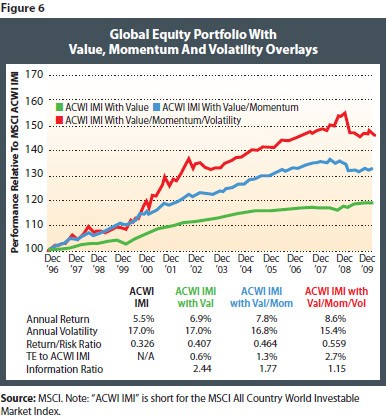Understanding Indexing as an Investment Strategy
Post on: 13 Июнь, 2015 No Comment

Back to Investment Help Center
Index investing was once available only to institutional investors, such as pension fund managers. In 1976, Vanguard introduced the first indexed mutual fund available to individual investors: the 500 Index Fund. Since then, index investing has become an increasingly popular investment strategy, with more than $347 billion invested in index funds nationwide, according to Lipper Inc.
In this article, I will explain how indexing has proven to be a simple and powerful approach to long-term investing. I will also offer a few cautionary notes or caveats.
What Is Indexing?
Indexing is an investment approach that seeks to match the investment returns of a specified stock or bond market benchmark, or index. When indexing, an investment manager attempts to replicate the investment results of the target index by holding all-or in the case of very large indexes, a representative sample-of the securities in the index. There is no attempt to use traditional active money management or to make bets on individual stocks or narrow industry sectors in an attempt to outpace the index. Thus, indexing is a passive investment approach emphasizing broad diversification and low portfolio trading activity.
Indexing’s Important Cost Advantage
Although indexing derives from the theory that the markets operate efficiently, its intellectual foundation is based on a simple truth: It is impossible for all stock investors together to outperform the overall stock market.
To understand this point, think of the returns of the stock market as a pie to be divided among all investors. Since 1926, the stock market has provided investors with an average return of 11.3% per year. Some investors, because of luck or skill, have earned more than 11.3%, while others have not fared as well. Yet the 11.3% historical average return is, by definition, the entire pie that investors are able to divide.
That figure, however, is the gross pie, before costs. Thus, as suggested in Figure 1. investors who gain their fair share of the pie and pay typical costs for investing in conventional stock mutual funds may expect to have a net return reduced by these costs and, therefore, earn significantly less than the market return.
These costs come in the form of:
· The fund’s expense ratio (including advisory fees, distribution charges, and operating expenses).
· Transaction costs (brokerage and other trading costs).
Figure 1

The average general equity fund has an annual expense ratio of 1.44% of investor assets. In addition, traditional mutual fund managers have high portfolio activity; the average fund’s portfolio turnover rate is 92% per year. (All mutual fund data provided by Lipper Inc.) The trading costs of this portfolio turnover may be expected to subtract an additional 0.5% to 1% annually.
Fund expenses and transaction costs for the typical fund take a hefty bite out of the pie-perhaps by approximately one-fifth of the gross return. Funds charging sales commissions swallow even more of the returns.
By contrast, one of the key advantages of an index fund should be its low cost. An index fund should pay only minimal advisory fees, keep operating expenses at the lowest possible level, and keep portfolio transaction costs at minimal levels. So, the magic of the index fund is that it leaves a larger share of the pie for investors.
The Evidence Speaks for Itself
Actual results confirm the pie analogy. Over time, the broad stock market indexes have outperformed the average general equity fund. Table 1 shows the total return (capital change plus income) of the Wilshire 5000® Total Market Index (a measure of the total U.S. stock market) versus equity funds.
Table 1
Total Return (Ten Years Ended December 31, 1999)














